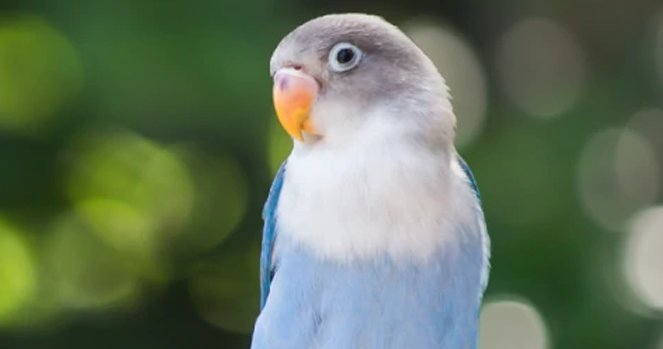Pellets or Seeds? What Is the Best Pet Bird Food?
Although birds love to eat seeds, a seed-based diet is not a balanced or healthy diet. Seeds are too high in fat and can lead to obesity and health issues like fatty liver disease. Seeds are also deficient in many nutrients, like vitamin A and calcium, which are essential for your bird’s growth, health and well-being. An all-seed diet is a top cause of pet bird deaths and can be linked to health problems, including feather picking.
So, what’s the best pet bird food, and how do you make the change? Find out:
What should my pet bird eat?
When thinking about your bird’s daily diet, imagine a pyramid. The base of the pyramid is made with a complete feed, like Mazuri® Small Bird Maintenance diet. Feed pellets should be about 50 to 75% of your bird’s food supply. Complete feeds are good for your bird because they provide balanced, uniform nutrition in each bite. This means no vitamin supplements are needed. Unlike seed mixes, extruded feed prevents ingredient sorting and helps reduce the risk of nutrient deficiencies. Also, complete feeds don’t have waste, like seed hulls, meaning you get more food for your money with less cleanup.
The next layer of the bird food pyramid is made up of healthy vegetables, leafy greens and fruit, representing 10 to 25% of the diet. When choosing fruits and veggies, look for vitamin-rich options like blueberries, spinach, kale, fresh bean sprouts, carrots, bell peppers, honeydew, pumpkins and sweet potatoes. Wash all fresh produce before serving and always remove harmful pits and seeds from fruit like apples, plums and peaches.
Finally, the top of the bird food pyramid represents treats, like seeds and nuts. These should be 10% or less of your bird’s diet. When you want to treat or reward your pet bird with a new snack, try millet – a starchy grain much lower in fat than oilseeds, like sunflowers. Millet is not only a healthy snack but also a great enrichment food for your birds. Millet sprays – sold with the grains still attached to the stalk – help to satisfy your bird’s natural need to forage. Hang a millet spray near a perch or hold it for your bird to pick at.
Following the bird food pyramid will provide all the nutrients and variety your pet needs to thrive and look great.
How do I switch my bird’s diet?
To switch birds from seeds (or any diet they are currently being fed) to a complete feed diet, do a gradual changeover.
Start with 90% seed (or current diet) and 10% complete feed diet. On each succeeding day, reduce the seeds by 10% while increasing the complete diet by 10%. On the 10th day, the diet should consist only of the complete feed diet.The 10-day timeline works for birds that start eating the Mazuri diet right away. If your bird is reluctant to eat the complete feed, increase the transition timeline until they are ready to accept the new diet.
Monitor the bird’s weight and behavior carefully during the transition period. If the bird is losing weight, or if the bird is not consuming the diet, offer a mix of 50% seed and 50% complete feed, and restart the process from this point. If your bird is not eating, the excrement color will become dark green, and the volume will decrease. If your bird is consuming a Mazuri® complete feed diet, the excrement will be a brownish-green color.
Have questions about feeding your birds? Ask our team of nutritionists for advice.
Suggested Articles:
Related Products:
